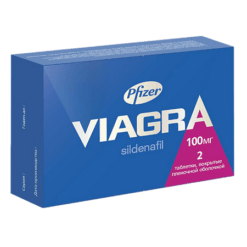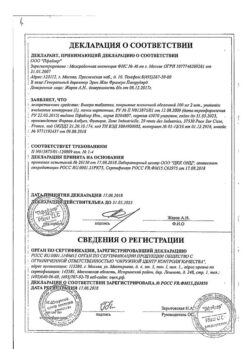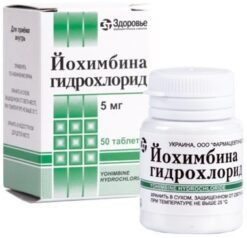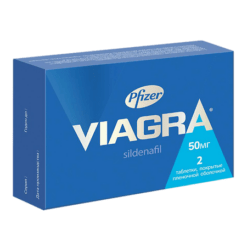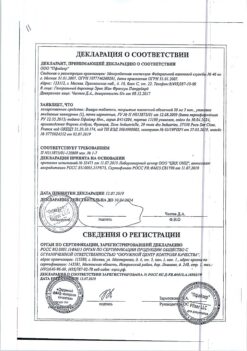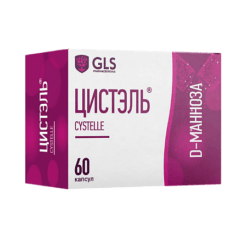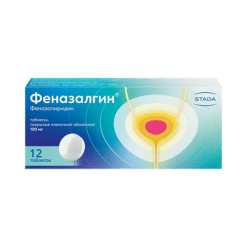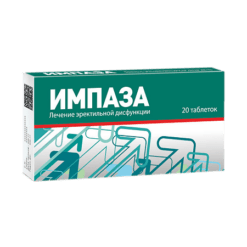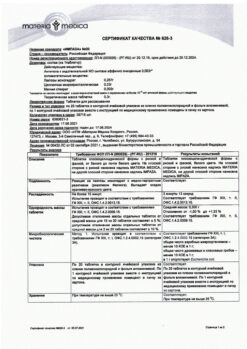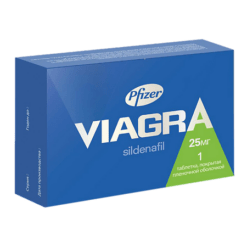No products in the cart.
Dynamiko Forward, 100 mg sachet
€1.00
Out of stock
(E-mail when Stock is available)
Description
Erectile Dysfunction
Treatment of erectile dysfunction characterized by the inability to achieve or maintain an erection of the penis sufficient for satisfactory intercourse.
Effective only with sexual stimulation.
Active ingredient
Active ingredient
Composition
Composition
1 film contains:
the active ingredient:
sildenafil 100.00 mg;
auxiliary substances:
Pullulan 62.48 mg,
propylene glycol alginate 4.40 mg,
xanthan gum 0.40 mg,
glycerol 26.00 mg,
sodium chloride 0.60 mg,
simethicone emulsion (30%) (in terms of dry matter) 1.00 (0.30) mg,
pp> polysorbate-80 1.80 mg,
Pearmint leaf oil 0.40 mg,
Kollicoat® IR Brilliant Blue 0.58 mg (58.1% macrogoal and polyvinyl alcohol copolymer, copovidone 6.4%, 8.4% titanium dioxide, kaolin 15.3%, sodium lauryl sulfate 1.9%, brilliant blue dye 9.9%),
Sodium saccharinate 0.40 mg,
succralose 0.40 mg,
water 0.470 mg.
How to take, the dosage
How to take, the dosage
Inwards, about 1 hour before the planned sexual activity. The film is taken out of the sachet (bag) with dry hands, immediately placed on the tongue and held until complete dissolution, then swallowed. When taken with food, the onset of action of DYNAMIKO FORWARD may be delayed compared to that when the drug is taken on an empty stomach.
The recommended dose for most adult patients is 50 mg. Taking into account efficacy and tolerability, the dose of DYNAMICO FORVARD may be increased to 100 mg or decreased to 25 mg (in which case another dosage form of 25 mg should be used). The maximum recommended dose is 100 mg. The maximum recommended frequency of use is once a day.
Dose adjustment is not necessary in elderly patients.
In patients with mild to moderate renal impairment (CKR 30-80 ml/min), no dose adjustment is required.
In patients with hepatic impairment the initial dose is 25 mg (in this case another dosage form of 25 mg should be used). If tolerated well, use DYNAMIKO FORVARD in a dose of 50 or 100 mg.
When used concomitantly with other medicinal products, including:
– with CYP3A4 isoenzyme inhibitors, the initial dose is 25 mg (in this case, another dosage form of 25 mg should be used). If tolerated well, use DYNAMIKO FORVARD in a dose of 50 or 100 mg.
With alpha-adrenoblockers, the drug should be started only after hemodynamic stability has been achieved. The initial dose is 25 mg (another dosage form of 25 mg should be used). If tolerated well, DYNAMIKO FORVARD may be used in doses of 50 or 100 mg.
Interaction
Interaction
Influence of other drugs on the pharmacokinetics of sildenafil
The metabolism of sildenafil occurs mainly under the action of cytochrome CYP3A4 isoenzymes (main pathway) and CYP2C9, therefore inhibitors of these isoenzymes may decrease sildenafil clearance, and inducers, respectively, increase sildenafil clearance. There is a decrease in sildenafil clearance with concomitant use of CYP3A4 isoenzyme inhibitors (ketoconazole, erythromycin, cimetidine).
Cimetidine (800 mg), a non-specific CYP3A4 isoenzyme inhibitor, when combined with sildenafil (50 mg) causes an increase in plasma concentration of sildenafil by 56%. A single use of 100 mg sildenafil together with erythromycin (500 mg/day 2 times a day for 5 days), a moderate inhibitor of CYP3A4 cytochrome isoenzyme, against the background of achieving a constant plasma concentration of erythromycin, leads to an increase in sildenafil AUC by 182%. When taking sildenafil (100 mg once) and saquinavir (1200 mg/day 3 times a day), an HIV protease inhibitor and CYP3A4 isoenzyme, together against achieving a steady plasma concentration of saquinavir Cmax of sildenafil was increased by 140%, and AUC was increased by 210%. Sildenafil has no effect on the pharmacokinetics of saquinavir.
Special Instructions
Special Instructions
To diagnose erectile dysfunction, determine its possible causes, and choose an appropriate treatment, a complete medical history and a thorough physical examination must be taken.
The treatment of erectile dysfunction should be used with caution in patients with anatomic penile deformities (angulation, cavernous fibrosis, Peyronie’s disease), or in patients with risk factors for priapism (sickle cell anemia, multiple myeloma, leukemia).
In the post-marketing period, cases of prolonged erections and priapism have been reported. If an erection persists for more than 4 hours, medical attention should be sought. If priapism is not treated promptly, it may lead to penile tissue damage and permanent loss of potency.
The drugs intended to treat erectile dysfunction should not be used in men for whom sexual activity is undesirable.
Sexual activity poses some risk if you have heart disease, so your doctor should refer you for a cardiovascular physical exam before starting any erectile dysfunction therapy. Sexual activity is undesirable in patients with heart failure, unstable angina, myocardial infarction or stroke within last 6 months, life-threatening arrhythmias, arterial hypertension (BP over 170/100 mm Hg) or hypotension (BP under 90/50 mm Hg). There was no difference in the incidence of myocardial infarction (1.1 per 100 people per year) or cardiovascular mortality rate (0.3 per 100 people per year) in patients receiving sildenafil compared to patients receiving placebo.
Cardiovascular Complications
In the postmarketing use of sildenafil for the treatment of erectile dysfunction, adverse events such as serious cardiovascular complications (including myocardial infarction, unstable angina, sudden cardiac death, ventricular arrhythmias, hemorrhagic stroke, transient ischemic attack, hypertension, and hypotension) that were temporarily associated with sildenafil use. Most, but not all, of these patients had risk factors for cardiovascular complications. Many of these adverse events were observed shortly after sexual activity, and some were noted after sildenafil administration without subsequent sexual activity. A direct relationship between the reported adverse events or other factors could not be established.
Hypotension
Sildenafil has a systemic vasodilatory effect resulting in a transient decrease in BP, which is not clinically significant and has no effect in most patients. Nevertheless, before using sildenafil, the physician should evaluate the risk of possible adverse vasodilatory effects in patients with relevant diseases, especially during sexual activity. Increased susceptibility to vasodilators is observed in patients with left ventricular outflow tract obstruction (aortic stenosis, hypertrophic obstructive cardiomyopathy), as well as with rare multiple systemic atrophy syndrome, manifested by severe impairment of BP regulation by the autonomic nervous system.
Caution should be exercised when using sildenafil concomitantly with alpha-adrenoblockers, as symptomatic hypotension may develop in some sensitive patients. To minimize the risk of postural hypotension in patients taking alpha-adrenoblockers, DYNAMIKO FORVARD should be started only after hemodynamic stability is achieved. Other dosage forms of sildenafil at a dose of 25 mg should also be considered for initial use. The physician should inform the patient as to what action should be taken if symptoms of postural hypotension occur.
Sight impairment
In the postmarketing period, rare cases of NPINSN have been reported, a rare condition and cause of decreased or lost vision when using FDE5 inhibitors, including sildenafil. Most of these patients had risk factors such as optic disc excavation (deepening), age over 50, diabetes mellitus, arterial hypertension, coronary heart disease, hyperlipidemia, and smoking. The observational study evaluated whether recent use of drugs of the FDE5 inhibitor class was also associated with the acute onset of NSAIDs. Results indicated an approximately 2-fold increased risk of NPINZN within 5 half-lives of use of an FDE5 inhibitor. Published literature suggests an annual incidence of NSAIDs of 2.5-11.8 per 100,000 men aged â¥50 years in the general population. Patients should be advised to discontinue sildenafil therapy in case of sudden vision loss and immediately consult a physician. Individuals who have already had a history of NSAIDs have an increased risk of a recurrence of NSAIDs. Therefore, the physician should discuss this risk with such patients and also discuss with them the potential chance of adverse effects of FDE5 inhibitors. PDE5 inhibitors, including sildenafil, should be used with caution in these patients and only in situations where the expected benefits outweigh the risks.
A small number of patients with hereditary retinitis pigmentosa have genetically determined retinal phosphodiesterase dysfunction. There is no information about the safety of sildenafil in patients with retinitis pigmentosa, so sildenafil should be used with caution.
Hearing impairment
There have been reported cases of sudden hearing impairment or loss associated with the use of FDE5, including sildenafil. Most of these patients had risk factors for sudden hearing impairment or loss. A causal relationship between the use of FDE5 inhibitors and sudden hearing impairment or hearing loss has not been established. If there is sudden hearing loss or hearing loss while taking sildenafil, consult a physician immediately.
Bleeding
Sildenafil enhances the antiplatelet effect of sodium nitroprusside, a nitric oxide donor, on human platelets in vitro.
There are no data on the safety of sildenafil use in patients with a tendency to bleeding or exacerbation of peptic ulcer disease, so sildenafil should be used with caution in these patients.
The incidence of nasal bleeding in patients with pulmonary hypertension associated with diffuse connective tissue disease was higher than in patients with primary pulmonary hypertension.
In patients concomitantly using sildenafil with vitamin K antagonists, the incidence of new bleeding was higher than in patients not taking vitamin K antagonists.
Simultaneous use with other erectile dysfunction therapy
The simultaneous use of DINAMICO FORVARD with other FDE5 inhibitors or other sildenafil-containing drugs or other erectile dysfunction treatments is not recommended, because the effectiveness and safety of combined treatment has not been studied.
The effect on the ability to drive:
Caution must be exercised when using DYNAMIKO FORWARD due to the possible development of dizziness, decreased BP and visual disturbances affecting concentration and rapid psychomotor reactions. You should also be attentive to the individual action of DYNAMICO FORVARD in the above situations and when changing the dosing regimen.
Contraindications
Contraindications
Hypersensitivity to sildenafil or any other component of the drug.
Continuous or intermittent use of nitric oxide donors (such as amyl nitrite), organic nitrates or nitrates in any dosage form, because sildenafil increases the hypotensive effect of nitrates.
The use in patients for whom sexual activity is undesirable (e.g., with severe cardiovascular disease, such as severe heart failure, unstable angina pectoris).
Have had a cerebral circulation disorder or myocardial infarction within the last six months.
Concomitant use of ritonavir.
Chronic renal failure is severe.
Hereditary degenerative retinal diseases, including retinitis pigmentosa (a smaller proportion of these patients have a genetic retinal phosphodiesterase disorder), due to the fact that the safety of use has not been studied.
Arterial hypotension (BP less than 90/50 mm Hg)
It is not recommended to use simultaneously with other drugs for the treatment of erectile dysfunction (the safety and effectiveness of combined therapy have not been studied).
It is not indicated for use in women and children under 18 years of age.
With caution:
In anatomical deformity of the penis (angulation, cavernous fibrosis, Peyronie’s disease), in patients with risk factors for priapism (sickle cell anemia, multiple myeloma, leukemia); in patients with a history of episodes of anterior nonarteritic ischemic optic neuropathy; diseases accompanied by bleeding; exacerbation of gastric and duodenal ulcer; heart failure, unstable angina, myocardial infarction, stroke, severe and life-threatening arrhythmias, arterial hypertension (BP over 170/100 mm Hg) suffered within last 6 months.Hg); concomitant use of alpha-adrenoblockers.
Side effects
Side effects
The most common adverse events are headache and “hot flashes”.
In general, side effects with use are mild to moderate and transient.
When using a fixed dose, the frequency of some adverse events increases with increasing dose.
The side effects are classified according to the following frequency: very common – â¥10%; common – â¥1%, but
Immune system disorders: infrequent – hypersensitivity reactions (including skin rash), allergic reactions.
Blood and lymphatic system disorders: infrequent – anemia, leukopenia.
Mechanisms and nutrition: infrequent thirst, edema, gout, uncompensated diabetes, hyperglycemia, peripheral edema, hyperuricemia, hypoglycemia, hypernatriemia.
Nervous system disorders: very frequently – headache; frequently – dizziness; infrequently – somnolence, migraine, ataxia, hypertonicity, neuralgia, neuropathy, paresthesia, tremor, vertigo, symptoms of depression, insomnia, unusual dreams, increased reflexes, hypoesthesia; rarely – convulsions*, recurrent convulsions*, fainting.
Cardiovascular system disorders: frequent – “flushes”; infrequent – palpitations, tachycardia, decreased blood pressure, unstable angina, atrioventricular block, myocardial ischemia, cerebral vascular thrombosis, cardiac arrest, heart failure, deviations in electrocardiogram readings, cardiomyopathy; rare – atrial fibrillation
Visual disorders: frequent – blurred vision, visual disturbances, cyanopsia; infrequent – eye pain, photophobia, photopsia, reddening of the sclerae/scleral injections, mydriasis, conjunctivitis, hemorrhage in the eye tissue, cataracts, tear production disorders, changes in light perception brightness, chromatopsia; rare – swelling of the eyelids and adjacent tissues, dry eye sensation, iridescent circles in the field of vision around the light source, increased eye fatigue, seeing objects in yellow light (xanthopsia), seeing objects in red color (erythropsia), conjunctival hyperemia, irritation of the mucous membrane of the eyes, unpleasant feeling in the eyes; frequency unknown – nonarteritic anterior ischemic optic neuropathy (NAINP), retinal vein occlusion, visual field defects, diplopia*, temporary vision loss, increased intraocular pressure, retinal edema, retinal vascular disease, vitreous detachment/vitreal traction.
Hearing organ: infrequent – sudden decrease or loss of hearing, tinnitus, tinnitus pain.
Respiratory system: often – nasal congestion; infrequent – nasal bleeding, rhinitis, asthma, dyspnea, laryngitis, pharyngitis, sinusitis, bronchitis, increased volume of sputum, increased coughing; rarely – feeling of tightness in the throat, dry nasal mucosa, nasal mucosa edema.
Gastro-intestinal tract disorders: frequent – nausea, dyspepsia; infrequent – vomiting, dry oral mucosa, gastroesophageal reflux disease, abdominal pain, glossitis, gingivitis, colitis, dysphagia, gastritis, gastroenteritis, esophagitis, stomatitis, deviation of “liver” functional tests from normal, rectal bleeding; rare – oral mucosa hypoesthesia.
Musculoskeletal system: often – back pain; infrequent – myalgia, pain in the extremities, arthritis, arthrosis, tendon rupture, tenosynovitis, bone pain, myasthenia gravis, synovitis.
Urogenital system disorders: infrequent – cystitis, nycturia, breast enlargement, urinary incontinence, hematuria, ejaculation disorders, genital edema, anorgasmia, hematospermia, penile tissue damage; rarely – prolonged erection and/or priapism.
Skin and subcutaneous tissue: infrequent – skin rash, urticaria, herpes simplex, skin itching, increased sweating, skin ulceration, contact dermatitis, exfoliative dermatitis; frequency unknown – Stevens-Johnson syndrome, toxic epidermal necrolysis.
Others: infrequent – sensation of fever, facial edema, photosensitivity reaction, shock, asthenia, increased fatigue, pain in various localizations, chills, accidental falls, pain in the chest area, accidental injury; rarely – irritability.
* Adverse events identified in post-marketing studies.
Cardiovascular Complications
In postmarketing use of sildenafil for the treatment of erectile dysfunction, adverse events such as severe cardiovascular complications (including myocardial infarction, unstable angina, sudden cardiac death, ventricular arrhythmias, hemorrhagic stroke, transient ischemic attack, hypertension, and hypotension) that were temporarily associated with sildenafil use. Most, but not all, of these patients had risk factors for cardiovascular complications. Many of these adverse events were observed shortly after sexual activity, and some were noted after sildenafil administration without subsequent sexual activity.
It is not possible to establish a direct relationship between the reported adverse events and these or other factors.
Visual impairment
In rare cases during post-registration use of FDE5 inhibitors, including sildenafil, NPINSN, a rare condition and cause of visual impairment or loss, has been reported. Most patients had risk factors, including decreased ratio of optic disc diameters (“stagnant disc”), age over 50 years, diabetes mellitus, hypertension, coronary heart disease, hyperlipidemia, and smoking.
The observational study evaluated whether recent use of FDE5 inhibitors was associated with acute onset of NSAIDs. Results indicated an approximately 2-fold increased risk of NPINZN within 5 half-lives of use of an FDE5 inhibitor. According to published literature, the annual incidence of NSAIDs is 2.5-11.8 cases per 100,000 men aged >50 years in the general population. Patients should be advised to discontinue use of sildenafil and immediately consult a physician in the event of sudden vision loss. Individuals who have already had a history of NSAIDs have an increased risk of a recurrence of NSAIDs. Therefore, the physician should discuss this risk with such patients and also discuss with them the potential chance of adverse effects of FDE5 inhibitors. PDE5 inhibitors, including sildenafil, should be used with caution in these patients and only in situations where the expected benefits outweigh the risks.
When sildenafil was used in doses higher than recommended, adverse events were similar to those noted above, but tended to occur more frequently.
Overdose
Overdose
Symptoms: adverse reactions (headache, facial flushing, dizziness, dyspepsia, nasal congestion, visual disturbances) were more severe and more frequent than with conventional doses; doses up to 200 mg increased the frequency but not the severity of adverse reactions.
Treatment: symptomatic therapy. Hemodialysis is ineffective.
Similarities
Similarities
Additional information
| Manufacturer | STSBio Inc, Korea Republic |
|---|---|
| Medication form | lozenges |
| Brand | STSBio Inc |
Related products
Buy Dynamiko Forward, 100 mg sachet with delivery to USA, UK, Europe and over 120 other countries.


